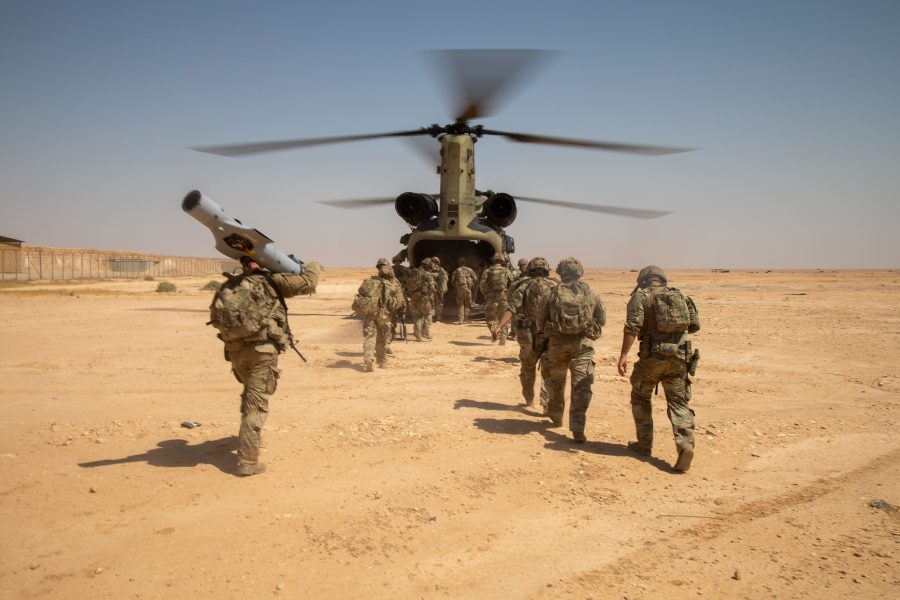The U.S. thwarted a drone attack on American forces at Al Asad air base in western Iraq on April 22, marking the first time that American troops have been targeted since February, U.S. officials said.
“We can confirm it was an attack on Al Asad,” a defense official told Air & Space Forces Magazine. “There were no injuries or damage to infrastructure.”
Another defense official said that two one-way attack drones had been shot down.
The episode comes on the heels of an incident the day before in Syria in which a coalition fighter destroyed a rocket system that was firing in the vicinity of a U.S. base in Rumalyn, Syria. Pentagon Press Secretary Air Force Maj. Gen. Patrick S. Ryder described the episode as an act of “self-defense” and a “failed rocket attack.”
The U.S. has not officially categorized the militia rocket firings in Syria as an attack because the projectiles did not land close to American forces and it is not clear where they were aimed.
“In this particular case, you had a truck with rockets on it that was shooting rockets all over the place, some type of malfunction,” Ryder said. He added the incident was still under investigation.
U.S. officials did not say which nation’s aircraft blew up the rocket system. American, British, and French fighters are known to fly missions over Syria as part of Operation Inherent Resolve, the campaign against the Islamic State.
“They clearly detected it, and so, took it out in self-defense,” Ryder told reporters.
U.S. forces had not been attacked since Feb. 4. Before that, there had been at least 170 attacks on U.S. troops in Iraq, Syria, and Jordan since mid-October, including a militia attack in late January in which three Soldiers were killed at Tower 22 in Jordan, just across the border from the U.S. Al Tanf base in eastern Syria.
The U.S. launched retaliatory airstrikes on Feb. 3. against 85 targets in Iraq and Syria affiliated with the Islamic Revolutionary Guard Corps and Iranian-aligned militias. That was the Biden administration’s largest use of force against Iran-backed militia groups in Iraq and Syria. It succeeded in deterring further attacks against U.S. forces in those countries until this week.
There are some 2,500 U.S. troops in Iraq and 900 in Syria advising partner forces and conducting operations against the Islamic State. The U.S. and Iraqi governments are negotiating over the future of the U.S. presence in Iraq.
“I think that deterrence is always temporal,” CENTCOM boss Gen. Michael “Erik” Kurilla told the Senate Armed Services Committee on March 16. “So you can deter for a period of time and then it will wane.”
The episode follows a nail-biting moment earlier this month when Iran launched its first-ever direct attack on Israel, which involved about 330 drones, cruise missiles, and ballistic missiles. Only four or five projectiles hit Israel and none did significant damage, U.S. officials say.
“We’ve seen these attacks, obviously, in the past,” State Department spokesman Matt Miller told reporters on April 22. “We have made quite clear to Iran, we’ve made quite clear to Iran’s proxy groups that we will defend our interests, we will defend our personnel, and that continues to be the case.”



